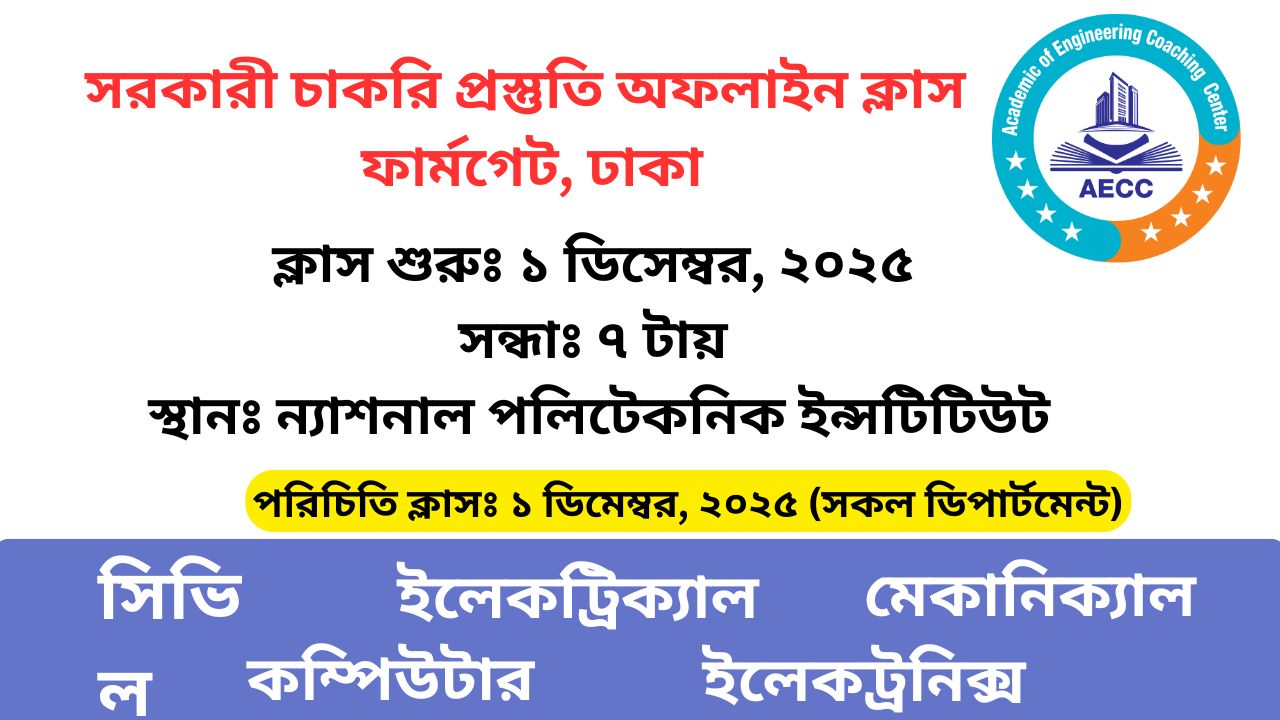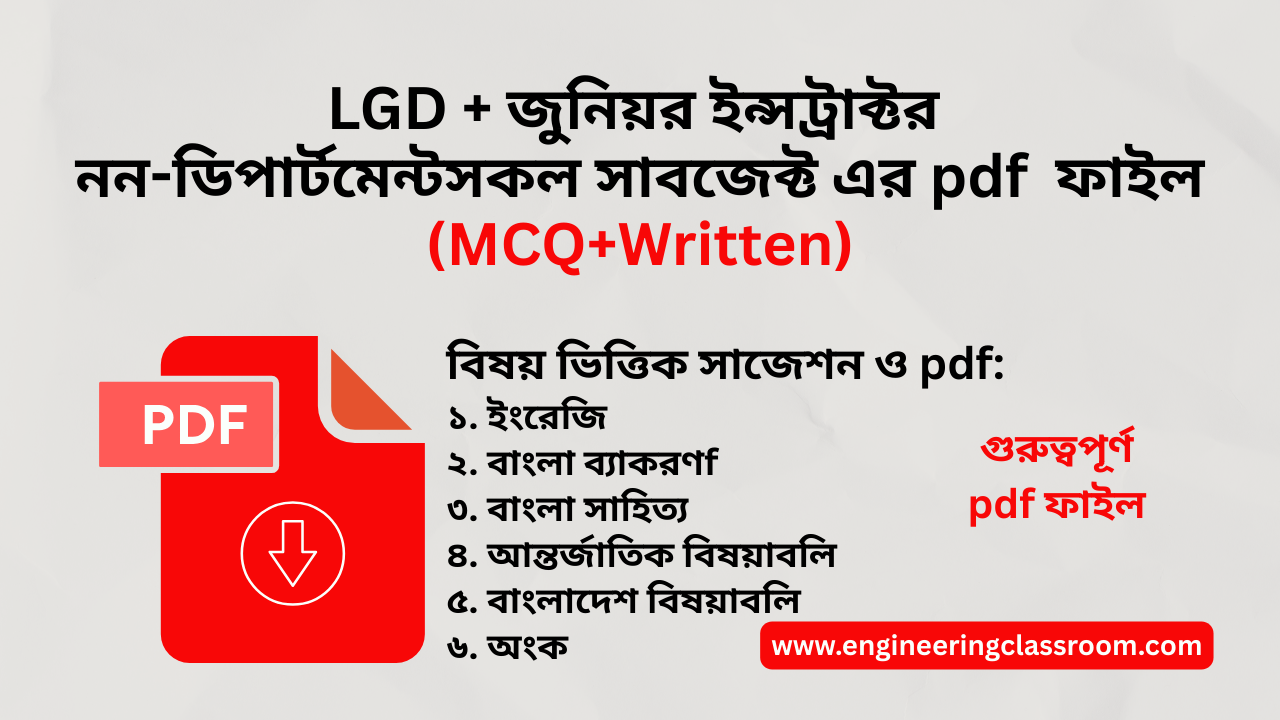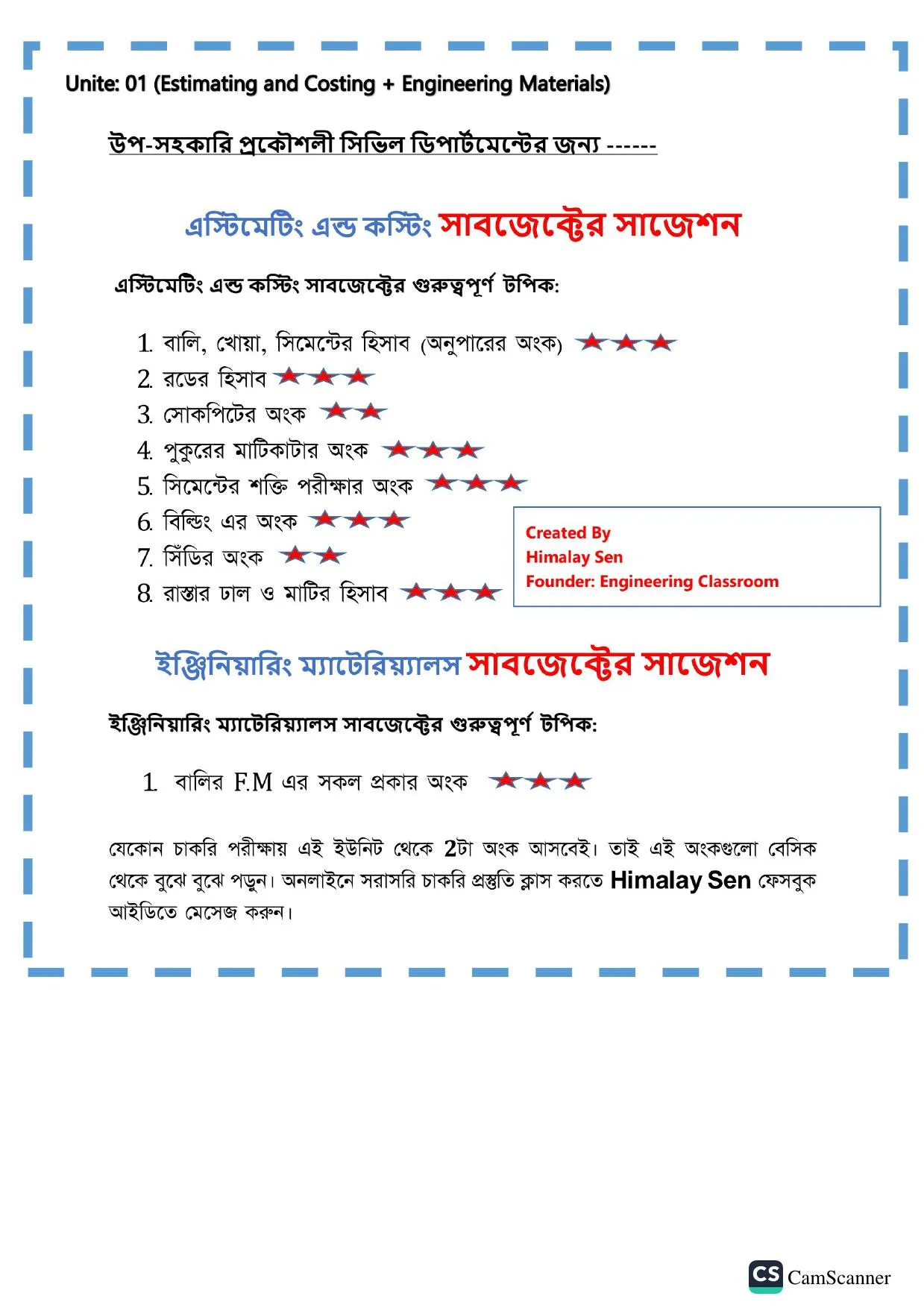MCQ
3821. The term 'force' may be defined as an agent which produces or tends to produce, destroys or tends to destroy motion.
Agree
Disagree
3822. The unit of power in S.I. unit is-[MES-18]
horsepower
kg.m
joule
watt
ব্যাখ্যা: The unit of power is watt. The unit of energy is joule.
3823. The resultant of two forces P & Q is R. If Q is doubled, the new resultant is perpendicular to P. Then-
P=Q
Q=R
Q=2R
none of these
3824. Two forces are acting at an angle of 120°. The bigger force is 40N and the resultant is perpendicular to the smaller one. The smaller force is-
20N
40N
80N
none of this
3825. The resultant of two equal force P making an angle θ, is given by-
2P sinθ/2
2P cosθ/2
2P tanθ/2
2P cot-θ/2
3826. A force while acting on a body may-
Change its motion
Balance the force
Internal stress rise
All of this
3827. The process of finding out the resultant force is called -----of force.
Composition
Resolution
3828. Two parallel sides of a trapezium are a and b, its height is h, its CG from base is at--- [MES-16]
π(a+b)/3h
h/3 (b+2a/b+a)
3/8(b+a /a+2b)
2h/3 b+2a/b+a
3829. Hook's law holds good up to ----[BADC 18]
elastic limit
breaking point
plastic limit
yeild point
none
3830. The angles between two forces when the resultant is maximum & minimum respectively are-
0° & 180°
180° & 0°
90° & 180°
90° & 0°
3831. An ideal machine is one whose efficiency is- [BREB-15]
between 60 and 70%
between 70 and 80%
between 80 and 90%
100%
ব্যাখ্যা: ব্যাখ্যা: The machine whose efficiency is 100% and in which friction is totally absent or Zero, is called as ideal machine. = 100%
3832. The ratio of linear stress to linear strain is --[MES-18,BADC-18]
bulk modulus
modulus of rigidity
poisson's ratio
modulus of elasticity
none
3833. The energy stored in a body when strained within elastic limit is known as- [MES-18]
resilience
strain energy
impact energy
proof resilience
3834. The relation between Young's modulus (E) and Bulk modulus (K) is given by- [MES-18]
K=3m-2 /mE
K= mE/3(m-2)
K=3(m-2)/mE
K= mE / 3(m-2)
3835. The friction experienced by a body, when at rest, is known as- (BREB-15]
static friction
coefficient of friction
dynamic friction
limiting friction
ব্যাখ্যা: ব্যাখ্যা: Static friction is the force of friction experienced by a body when it is at rest it is the value of the limiting friction just be fore slipping occurs.
3836. The unit of strain is- (BADC-18)
mm
N/mm
N-mm
no unit
None
ব্যাখ্যা: Strain is defined as "deformation of a solid due to
stress. Strain is a dimensionless unit since it is the
ratio of two lengths.
strain= change in length/original length
3837. Which is not a unit of stress? [MES-16]
Pa
N
psi
MPa
ব্যাখ্যা: Stress is a force that tends to deform the body on which it acts per unit area. It is measured in N/m² and this unit is specifically called pascal (Pa).
Unit of stress N/m², Pa, MPa, Psi
Unit of force =N (Newton).
3838. The stress developed in the material without any permanent set is called. [MES-18]
elastic limit
breaking point
yield point
ultimate point
ব্যাখ্যা: ব্যাখ্যা: Elastic limit, maximum stress or force per unit area within a solid material that can arise before the onset of permanent deformation.
3839. Whenever a material is loaded within elastic limit, stress is-strain. [BREB-15]
equal to
directly proportional to
inversely proportional to
None of these
ব্যাখ্যা: ব্যাখ্যা: Hook's law states that strain is directly proportional to strain produced by the stress when a material is loaded within the elastic limit.
3840. 1kg force is equal to-
7.8N
12N
8.91 N
9.81N
















